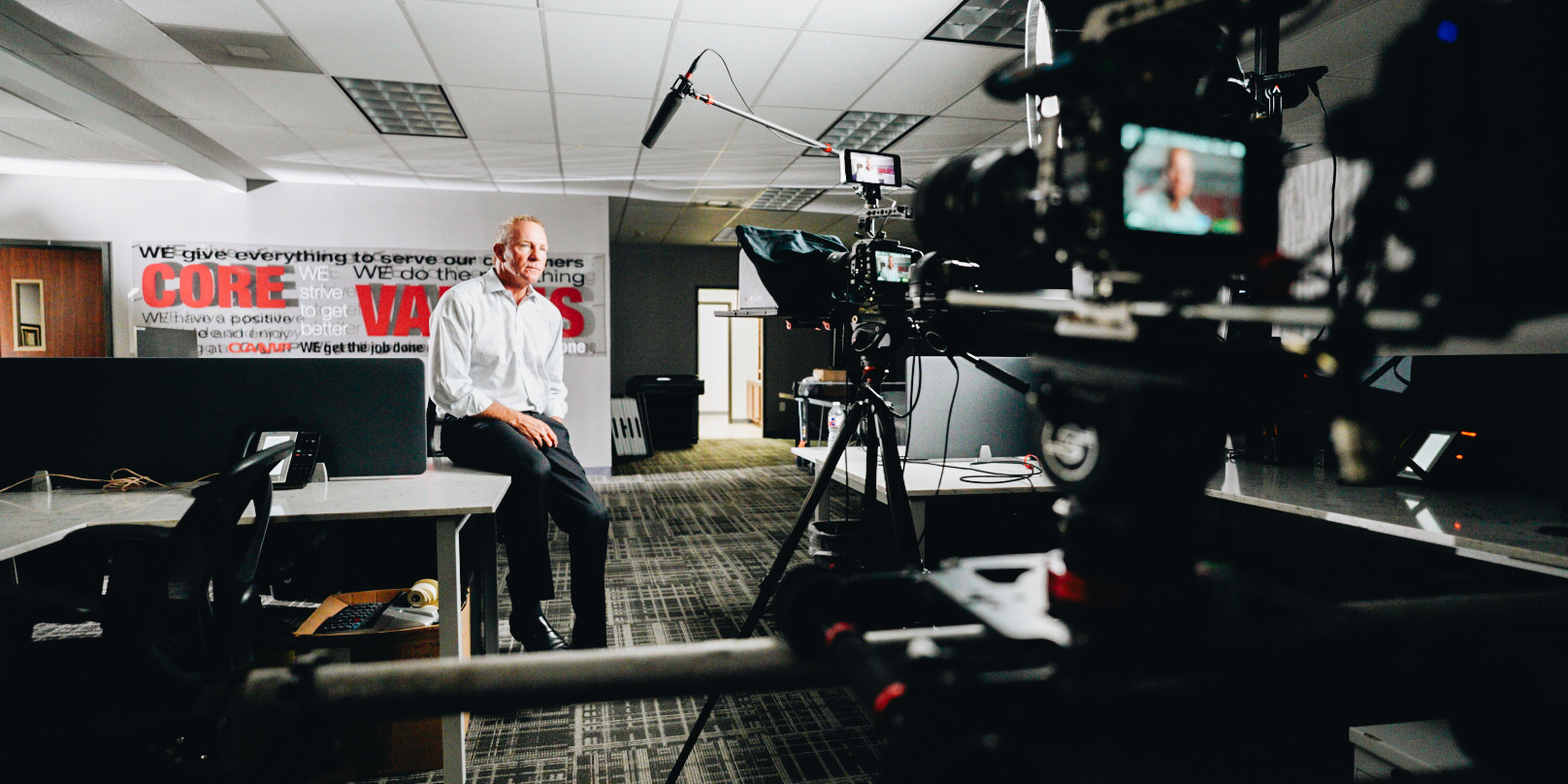Why Most B2B Testimonials Are Just Noise (And How to Fix Them)
Visit any B2B website and you’ll find a wall of predictable praise:
“Great team to work with.”
“They delivered on time.”
“We saw amazing results!”
These sound nice. But they don’t actually say anything.
And that’s the problem.
Marketers love testimonials because they’re easy to get. The customer is happy, you point a camera at them, and out comes a 30-second clip of polite compliments. Mission accomplished, right?
Wrong.
If you think those bite-sized blurbs are convincing your next customer to sign a multi-six-figure deal, you’re kidding yourself. That kind of proof might check a box, but it doesn’t build belief. And belief is the real currency of B2B decision-making.
Why This Matters
Your buyer isn’t looking for confirmation that your clients “like working with you.” They’re trying to solve a business problem. And before they invest time, money, and political capital, they need evidence that you can actually make a difference for someone like them.
That’s the gap most testimonials fail to bridge. They offer approval, not transformation. General praise, not specific change. And in doing so, they sound like white noise.
When a CFO, operations leader, or VP of Sales watches a traditional testimonial, they’re left with more questions than answers:
-
What problem did this customer have in the first place?
-
How exactly did your solution help?
-
What changed in their business because of you?
-
And most importantly—can I see myself in this story?
If the testimonial doesn’t answer those questions, it’s not working. It might be pleasant to hear, but it’s not moving the needle.
The Real Role of Proof
Here’s what proof is supposed to do:
It connects the dots between your promise and their problem—but from someone else’s mouth.
The best proof content doesn’t feel like marketing. It feels like a story. A relatable, specific, emotionally grounded story of a real person overcoming a real challenge—ideally, a challenge that looks a lot like the one your prospect is facing right now.
That’s why the generic soundbite approach to testimonials is so flawed. It removes all the context and character. It’s all resolution, no setup. All applause, no stakes.
But real buying decisions aren’t made on applause alone. They’re made when the buyer sees a reflection of themselves in the problem, and a credible path to solving it.
So… Should We Ditch Testimonials?
Not entirely. There is a time and place for informal testimonial content, especially when it’s spontaneous, authentic, and part of a broader content mix.
Let’s say a client raves about you in a meeting. Or you grab a quick trade show soundbite. Perfect. Use that content for what it is: social proof. A bit of positive reinforcement. A slice of happy customer energy. Great for social. Great for vibe.
But don’t confuse that for your actual proof strategy. If your entire content plan for customer validation is “let’s get a testimonial,” you’re playing the game at half-speed.
You don’t need a testimonial. You need a story.
From Testimonial to Case Story
This is where most B2B teams need to reframe their thinking.
Instead of chasing generic testimonials or dry case studies, start building case stories—full, character-driven narratives where your customer is the protagonist and your solution plays a meaningful supporting role.
A great case story includes:
-
A clearly defined challenge or problem
-
Real consequences if the problem remains unsolved
-
Failed or stalled attempts to fix it
-
The moment they found you—and why they chose you
-
The journey of working together (onboarding, obstacles, wins)
-
Measurable results and emotional impact
-
And ideally, a transformation that other prospects can aspire to
You’re not just showing that your company is competent. You’re showing that change is possible. That a problem that felt overwhelming or stuck can be solved. That’s powerful.
And when it’s told by someone your prospect resembles—same role, same industry, same stakes, it doesn’t feel like marketing. It feels like truth.
How to Make It Happen
You don’t need to hire a documentary crew or spend six months scripting each story. But you do need to think beyond your product. The focus is the customer’s journey, not your deliverables.
Here’s how to shift from noise to narrative:
1. Choose the Right Customer
Start with clients who represent your ideal buyer. If you're targeting manufacturing execs struggling with labor costs, find a client who lived that exact pain. The more aligned their situation is to your prospect’s world, the more believable the story becomes.
2. Structure the Interview Like a Journey
Don’t just ask, “What was it like working with us?” Ask:
-
What was going on in your business before we met?
-
What wasn’t working?
-
What did you try before?
-
Why did you ultimately choose us?
-
What was different about our approach?
-
What has changed since implementation?
These aren’t trick questions. They’re story prompts.
3. Capture More Than One Format
Turn the long-form video into shorter cuts. Pull quotes for LinkedIn posts. Use snippets in your sales emails. Create a full landing page around the story. Build a library of stories you can use again and again—across channels, across funnels.
4. Keep It Going
Don’t stop at one or two case stories. Build a rhythm. Monthly or quarterly is ideal. Over time, you’ll have a bank of stories that cover industries, roles, and key objections. That’s how you scale trust.
Final Thought: You’re Not the Hero
This is where most companies get it wrong.
They think the point of a testimonial is to prove they are great.
But the real point of customer stories is to prove that your customer got great results—and that someone just like your prospect can do the same.
So stop collecting compliments and start telling stories.
Because in B2B, trust isn’t earned through praise—it’s earned through proof.
And the best proof… sounds like them. Not you.
You May Also Like
These Related Stories

Rethinking B2B Video: Why Your Strategy is Backward (And How to Fix It)

Why B2B Companies Must Fight for Attention Before It's Too Late


